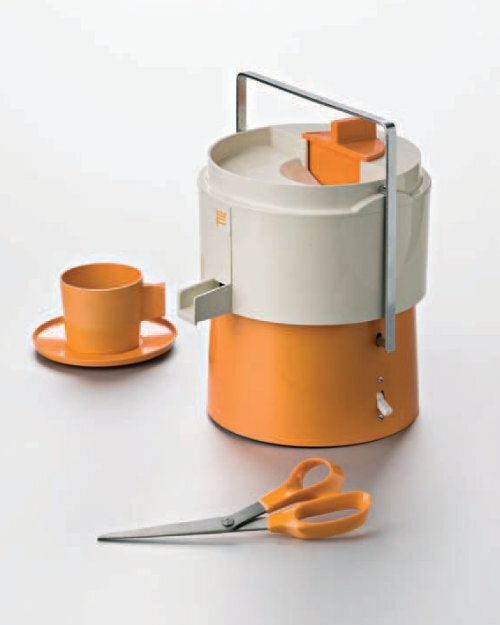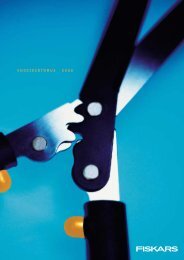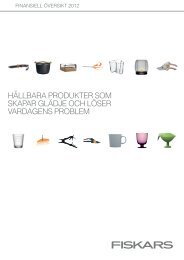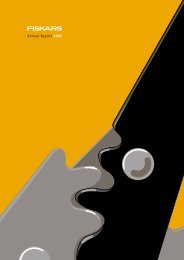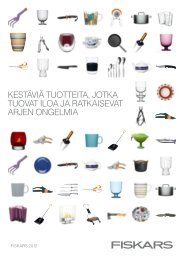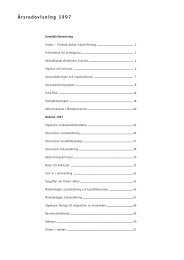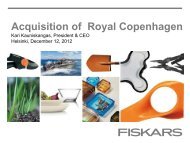FISKARS 1649 â 360 years of Finnish industrial history
FISKARS 1649 â 360 years of Finnish industrial history
FISKARS 1649 â 360 years of Finnish industrial history
You also want an ePaper? Increase the reach of your titles
YUMPU automatically turns print PDFs into web optimized ePapers that Google loves.
Fiskars <strong>1649</strong><br />
Fiskars <strong>1649</strong><br />
After the war<br />
Structural changes and new direction<br />
In the second half <strong>of</strong> the 20th century,<br />
engineering was forced to adapt to a totally<br />
new state <strong>of</strong> affairs. The Winter War and<br />
Continuation War – the two halves <strong>of</strong> Finland’s<br />
part in the Second World War – had taken toll <strong>of</strong><br />
Finland, both in human and in economic terms.<br />
Putting the economy on a war footing had virtually<br />
wiped out imports and exports. To take an example,<br />
production for the domestic market did not climb<br />
back to the prewar level until 1948. The Paris<br />
Peace Treaty and the Friendship and Cooperation<br />
Treaty signed with the Soviet Union in the same<br />
year were the foundation <strong>of</strong> a new foreign policy<br />
for Finland. Finland established its position in<br />
the world, first by joining the Nordic Council in<br />
1955 and the United Nations a year later. Finland<br />
participated in European convergence, initially by<br />
associate membership <strong>of</strong> EFTA in the 1960s and<br />
finally, in 1995, by joining the European Union;<br />
in 1999 it was among the first EU member states<br />
to join the economic and monetary union EMU in<br />
the introduction <strong>of</strong> the common currency. With its<br />
financial market thus liberalized, Finland stands<br />
ready for the era <strong>of</strong> globalization.<br />
The postwar reparations demanded by the Soviet<br />
Union meant plenty <strong>of</strong> orders for the metal industry,<br />
while the forest industry reigned supreme in exports<br />
to the West. A far-reaching change took place in<br />
1956, when Urho Kekkonen’s 26-year presidency<br />
began. It was during that same year that Finland<br />
got back the military base in Porkkala that had been<br />
in Soviet hands since the end <strong>of</strong> the war. In spring<br />
1956, a general strike shook every field <strong>of</strong> industry<br />
and led Finland into a period, lasting until the<br />
Fiskars PowerStep pruners.<br />
In the 1960s, plastic was a promising material <strong>of</strong> tomorrow. The shell <strong>of</strong> the Fiskars liquidizer was plastic (in production<br />
1965–70) and the tableware was made in the 1962–73 period. The production <strong>of</strong> the orange-handled scissors started in 1967.<br />
42<br />
43


